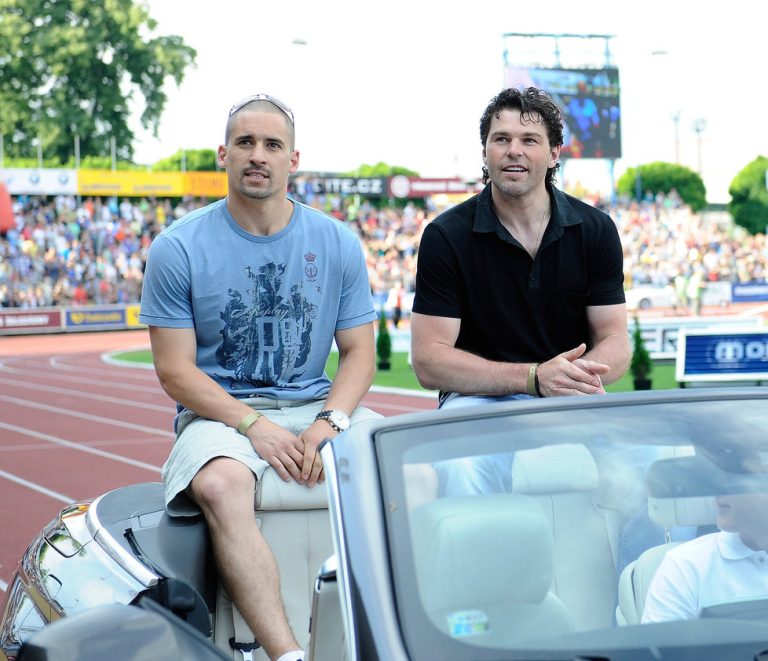
by Shannon Penfound, Staff Writer and Event Coordinator, All Habs Hockey Magazine
WINNIPEG, MB.– Though the season ended much too early, for both players and fans alike, the offseason is an extremely important time of the year for the Montreal Canadiens. First of all, we have the NHL Entry Draft which takes place every June. If you’re interested in joining the All Habs team in Florida this year, click here to see how you can win tickets.
The NHL Entry Draft allows teams to go after young up-and-comers in the sport, filling gaps in their prospect pools. Last year in the first round, the Canadiens drafted Russian right-winger Nikita Scherbak, who was a proven force in the WHL this past season with the Everett Silvertips. Scherbak, 19, had 27 goals and 55 assists in 65 games. He slotted in another eight points in 11 playoff games. Prior to trading for P.A. Parenteau and Jiri Sekac earlier last year, there was a bit of a hole in our prospect pool at the RW position, so Trevor Timmins drafting Scherbak in June of 2014 came as no surprise to many Habs fans.
During the offseason, we also see the pure madness that is ‘free agency.’ On July 1st, all unrestricted free-agents are ‘sign-able’ by whichever teams may show interest. High on the list for the Habs this season is free-agent defenseman Jeff Petry, who came to Montreal from the Edmonton Oilers at the trade deadline in exchange for a 2015 second round draft pick. Petry has let it be known that he enjoyed his time in Montreal and would be interested in staying. The 27-year old was a welcome addition to the blue line, playing no.3 defender minutes once he joined the club in March. General Manager Marc Bergevin has indicated that he intends to bring Petry back into the Canadiens’ line-up this fall. Here’s to hoping.

So while the brass of the hockey world doesn’t get much of a break until after these two important events take place, the players are able to enjoy some much-deserved R&R. Carey Price and wife Angela were recently posting photos of their trip to Italy. P.K. Subban admitted that May 26th marked his first day back in the gym since being eliminated on May 12th. Unfortunately for some players, the offseason also means finally addressing injuries acquired before and during the playoffs, like youngster Jacob de la Rose who underwent surgery on his wrist. DLR is expected to be healed up in time for training camp, which is good news for Habs fans as the rookie had himself a hell of a season.
So what does the offseason mean for elite athletes? It gives them time to focus on friends and family, to hone in on their physical fitness and prepare for another season, while still taking the time to rest weary bodies that are put through a variety of stressors for the majority of a year.

Athlete burnout is a very real concern for many elite athletes. Burnout occurs when an individual reaches a state of total exhaustion – physically, mentally, and emotionally. Because athletes have been shown to have very achievement-oriented personalities, and are involved in high-stress situations (especially come playoff season), elite athletes can be more prone to burnout. Typically, we see two factors that come into play with respect to athlete burnout: environmental and personal. Environmental causes can include issues such as over-training, playing through injuries, or issues amongst players or within the coach-player dynamic. Personal causes can include high expectations for oneself and poor coping strategies for such stressors.
When an athlete is experiencing symptoms related to burnout, we can begin to witness feelings of anxiety and see fatigue set in. Often, players will also show decreased motivation and decreases in performance levels. Perhaps most importantly, burnout can lead to poor decision-making on the ice, affecting an athlete’s confidence level and creating a sort of cyclical trend.
So while fans may feel a bit restless when the season ends, it’s important to remember that our favourite athletes quite literally require that time away from the sport that they love in order to recharge their batteries for the next season.
We at All Habs understand how difficult the offseason can be. So stick with us, and we will help you through it with full entry draft & free agency coverage, and also our continued thoughts on the 2014-2015 season and our forecasts for what will prove to be an exciting 2015-2016 season.
1. Weinberg, R.S., & Gould, D. (2011). Foundations of Sport and Exercise Psychology. (5th). Champaign,IL: Human Kinetics.


